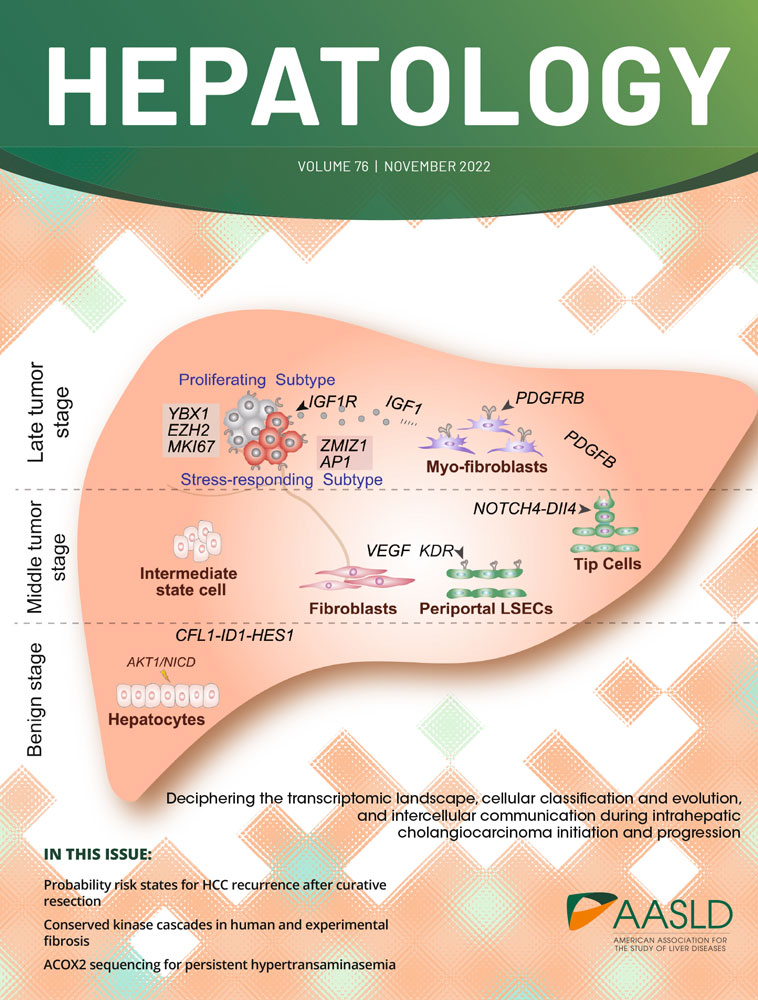A developmentally prometastatic niche to hepatoblastoma in neonatal liver mediated by the Cxcl1/Cxcr2 axis
Li Fan and Qingfei Pan contributed equally.
Funding information
This work was supported by American Cancer Society Research Scholar Grant RSG-18-026-01 (to Liqin Zhu) and National Institutes of Health GM134382 (to Jiyang Yu)
Abstract
Background and Aims
Hepatoblastoma (HB) is the most common pediatric liver cancer. Its predominant occurrence in very young children led us to investigate whether the neonatal liver provides a protumorigenic niche to HB development.
Approach and Results
HB development was compared between orthotopic transplantation models established in postnatal day 5 (P5) and 60 (P60) mice (P5Tx and P60Tx models). Single-cell RNA-sequencing (sc-RNAseq) was performed using tumor and liver tissues from both models and the top candidate cell types and genes identified are investigated for their roles in HB cell growth, migration, and survival.
Conclusions
We found that various HB cell lines including HepG2 cells were consistently and considerably more tumorigenic and metastatic in the P5Tx model than in the P60Tx models. Sc-RNAseq of the P5Tx and P60Tx HepG2 models revealed that the P5Tx tumor was more hypoxic and had a larger number of activated hepatic stellate cells (aHSCs) in the tumor-surrounding liver that express significantly higher levels of Cxcl1 than those from the P60Tx model. We found these differences were developmentally present in normal P5 and P60 liver. We showed that the Cxcl1/Cxcr2 axis mediated HB cell migration and was critical to HB cell survival under hypoxia. Treating HepG2 P60Tx model with recombinant CXCL1 protein induced intrahepatic and pulmonary metastasis and CXCR2 knockout (KO) in HepG2 cells abolished their metastatic potential in the P5Tx model. Lastly, we showed that in tumors from patients with metastatic HB, there was a similar larger population of aHSCs in the tumor-surrounding liver than in localized tumors, and tumor hypoxia was uniquely associated with prognosis of patients with HB among pediatric cancers. We demonstrated that the neonatal liver provides a prometastatic niche to HB development through the Cxcl1/Cxcr2 axis.
CONFLICT OF INTEREST
Dr. Yang received grants from Takeda for research unrelated to this work.
Open Research
DATA AVAILABILITY STATEMENT
The raw scRNA-seq data have been deposited in the Gene Expression Omnibus (GEO; accession number: GSE186027). The codes of the data analysis in this paper are freely available at https://github.com/jyyulab/Heptoblastoma_Cxcl1. The total RNA-seq data have been deposited in GEO (accession number: GSE186335).
Detailed methods can be found in the Supporting Materials.




